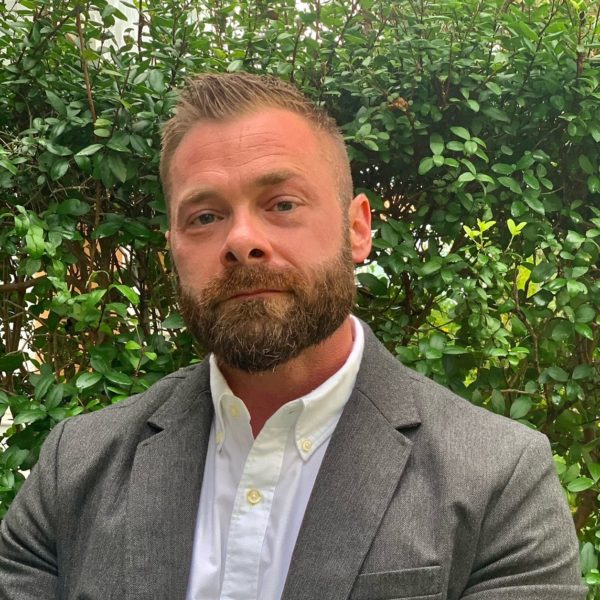Episode 155: Eline van den Brink on How Enablement Drives Connection and Collaboration
4.1K Views | 13 Min Read
Shawnna Sumaoang: Hi, and welcome to the Sales Enablement PRO podcast, I’m Shawnna Sumaoang. Sales enablement is a constantly evolving space, and we’re here to help professionals stay up to date on the latest trends and best practices so that they can be more effective in their jobs.
Today, I’m really excited to have Eline from Sana Commerce join us. Eline, I would love for you to introduce yourself, your role, and your organization to our audience.
Eline van den Brink: Thank you, Shawnna. Hi, my name is Eline van den Brink, and I lead a global team in sales enablement and operations at Sana Commerce, a software company in the e-commerce space. We basically make e-commerce and ERP systems work as one for B2B organizations.
I’m from the Netherlands, as you might’ve heard by my accent. I’m from a beautiful city called Rotterdam and I have a background in supply chain management and operations. I’ve been in the sales enablement space for about five years now. When I started at Sana, I was the only one in our commercial team with a full focus on providing insights into our commercial performance and making our sales operations more efficient.
Over the years, I have further developed the team, formalized our approach into what we now call sales enablement and operations.
SS: Eline, thank you so much for joining us. You have such a beautiful name, I’m jealous I can’t pronounce it as beautifully as you do.
Now, to dive right in, given your position and how you oversee both sale enablement and operations, what does the intersection between those two disciplines look like from your perspective?
EB: From my point of view, I think enablement and operations can really strengthen each other. For us, operations focus more on the technical side, the process side of things like tooling, activity tracking, KPI reporting, and processing deals. Enablement can really reinforce this and the other way around, it also works.
For example, enablement thinks about, how do we land new processes and solutions that maybe the operations team came up with? How do we make sure that they land in our organization, that they are adopted? How do we make sure that all of this knowledge is captured in a great onboarding program? How do we make sure that our sellers can always access the right marketing and product content at the right time? And also ensure that they actually use it when it’s needed?
It often happens that our enablement team would actually come up with a great idea on how to capture more insights on the usage of content in our sales process. They might want to embed this in reporting or another technology like our CRM system, and that’s where operation would then come in and they would collaborate on making that happen.
The other way around, operations have access to lots of data from tracking sales activities to more performance-related data. They would use this as input to determine, for example, where bottlenecks are in a process and if additional training is needed in certain areas. That’s where enablement can then add great value, creating more content or e-learnings or better onboarding to improve that.
SS: I think that’s spot on. Now, you also mentioned in your intro that you have expertise in supply chain management, and really thinking about how to optimize business processes.
How does this expertise inform your approach to sales enablement and operations and how can sales enablement practitioners really think about helping to streamline processes for salespeople?
EB: Yes, I’m a very process-minded person. I see everything as a supply chain, with at the end, the value that we deliver to our customer, which can be internal or external. Even though we don’t sell a tangible product at Sana, we sell software, I basically see our entire commercial process as a supply chain.
Every time our enablement team is facing a complex challenge, or we need to rethink a certain process, I try to encourage my team to really visualize that from start to end. What is your desired end result? Who is doing what? How does information flow from one person to another or from one system to another?
That often helps us to identify where things can be improved, to be more efficient, to be more effective. Most of what we do in enablement and operations has impacts on either efficiency or performance, so I do believe that that’s a great starting point for us.
SS: Absolutely. Now, as a sales enablement professional, you have a ton of stakeholders within the organization, and on LinkedIn you had mentioned the importance of translating the needs of stakeholders into your plans.
I’d love some advice from you. How can sales enablement collaborate with stakeholders from across the organization to improve alignment on all of the strategic initiatives for the organization?
EB: Yeah, I think sales enablement is a key player in the alignment between management, marketing, sales, product team, or the delivery team in our case. Even though our goal is to enable our sales team to be successful, we also understand and act upon the challenges and needs from those other departments.
I think in enablement you really have the ideal position to bring all of that together. For example, last quarter, we drove an initiative where we combined sales data on the usage of content and capturing seller’s qualitative input, and then combining that with marketing’s content strategy in order to drive real improvements into what assets we share out into the market.
We also worked with a product team to create better demo environments to showcase our product, which our sellers use, but we also take into consideration the needs and the challenges that our product developers face.
SS: I love that. Now, one strategic initiative that you’re passionate about is enhancing diversity and inclusion in the workplace, and I believe you are even part of the D&I team for your organization. In a recent article, you talked about the importance of D&I saying that it means everyone can be their true selves without compromising their identity. Personally, that is an area that I am extremely passionate about as well.
I would love to hear from you and for our audience, how can enablement help to ensure that people feel included and safe to be their authentic selves at work?
EB: That’s a great question. I truly believe that in enablement, you are the eyes and ears of the commercial organization, and you should use that ability to spot issues early on and make sure that things can be discussed openly and with the right person.
What I see in our organization is that often people from all over the business would ask my team, why does it always seem like you know everyone in the company? Well, I think we do. We do actually know a lot of people in the company because we have such a central position in the organization where we talk with so many different stakeholders and people from different regions, different teams. We really know a lot about what’s going on and we understand the different challenges and the different cultures that people actually have to work with.
Now, our company is still growing and scaling up, so we’re not a large enterprise yet, we currently have around 500 employees worldwide. I can imagine that if you’re in a larger enterprise, it’s more difficult to always know everything that’s going on. As an enablement team, you’re probably not going to know everything in the entire organization, but on a smaller scale, I think still within your department or within your region, enablement can fulfill that role being in that central position.
SS: I couldn’t agree more. Now, another area where inclusivity comes into play is with regard to gender diversity. I know that you have also been a really strong advocate for that, particularly for women in tech.
What has been your own experience navigating the industry, and being able to rise up to the levels of leadership throughout your career?
EB: I’m lucky to be working in a position and in a company where I could really craft my own job. Even though the environment I was working in at the beginning was predominantly male, I still built the team from scratch and therefore I could also prove myself in the field before I became the leader of the team.
I also think that maybe it’s not something that I like about myself, I’m going to share it anyway, but throughout my career, I’ve been very good at adjusting my behavior and my attitudes to what was expected from me by my mostly male colleagues. It got me to where I am now, but it also took some self-reflection and rethinking about, okay, who am I really? And how can I be a good leader while also staying true to myself?
That’s exactly one of the things that I want to make other women aware of so that they can avoid this type of behavior in their journey, and that they can really stay true to themselves, but also be a great leader. That’s why together with a colleague, I’ve initiated a women in tech community at our company. We’re trying to enable other women to overcome these challenges and be more confident in this male-dominated environment. We want to create awareness on the challenges that many women face and create a platform where these challenges can be discussed openly.
We’re still in the startup phase, but the feedback that we got so far has been great.
SS: I think that’s a fantastic initiative, I really do. Now, to close out on this topic, and my last question for you, Eline, what are some actionable ways that sales enablement can help remove barriers to really ensure equity in the opportunities to succeed for all reps within the organization?
EB: Yeah. I talked about the central position, and what I really love about sales enablement is that central position in our organization. Even though we are reporting into the commercial organization and we’re really driven by our ambitious goals and our KPIs and sales performance, our enablement team connects and collaborates with so many different stakeholders from different departments.
We just know a lot about the company’s processes, about the people, our customers. We can use that position to connect people from our product development team in Ukraine to our regional marketers in the US in order to create impactful content or create beautiful demo environments.
It allows us to play a key role in overcoming those cultural biases that you see when you work with people from different countries and different regions. Creating connections between people that go beyond their inner circle of the team or the country that they work in, and that’s what I really love about this position that we have in an enablement team.
SS: Eline, I’ve enjoyed chatting with you. Thank you so much for making the time.
EB: It was a pleasure. Thank you so much for having me and good luck with the rest of your podcasts.
SS: Thank you. To our audience, thanks for listening. For more insights, tips, and expertise from sales enablement leaders, visit salesenablement.pro. If there’s something you’d like to share or a topic you’d like to learn more about, please let us know. We’d love to hear from you.















